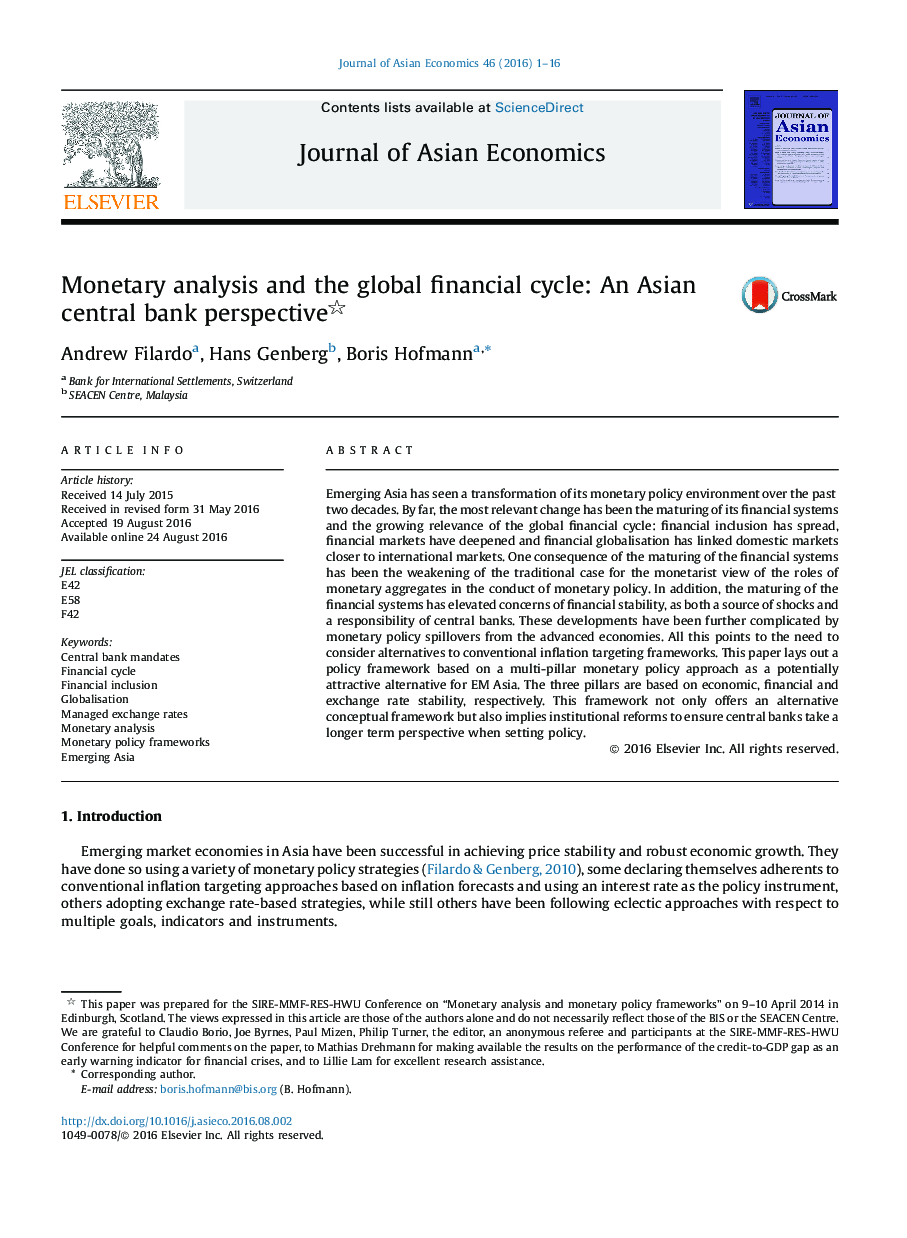| Article ID | Journal | Published Year | Pages | File Type |
|---|---|---|---|---|
| 5087185 | Journal of Asian Economics | 2016 | 16 Pages |
Abstract
Emerging Asia has seen a transformation of its monetary policy environment over the past two decades. By far, the most relevant change has been the maturing of its financial systems and the growing relevance of the global financial cycle: financial inclusion has spread, financial markets have deepened and financial globalisation has linked domestic markets closer to international markets. One consequence of the maturing of the financial systems has been the weakening of the traditional case for the monetarist view of the roles of monetary aggregates in the conduct of monetary policy. In addition, the maturing of the financial systems has elevated concerns of financial stability, as both a source of shocks and a responsibility of central banks. These developments have been further complicated by monetary policy spillovers from the advanced economies. All this points to the need to consider alternatives to conventional inflation targeting frameworks. This paper lays out a policy framework based on a multi-pillar monetary policy approach as a potentially attractive alternative for EM Asia. The three pillars are based on economic, financial and exchange rate stability, respectively. This framework not only offers an alternative conceptual framework but also implies institutional reforms to ensure central banks take a longer term perspective when setting policy.
Related Topics
Social Sciences and Humanities
Economics, Econometrics and Finance
Economics and Econometrics
Authors
Andrew Filardo, Hans Genberg, Boris Hofmann,
